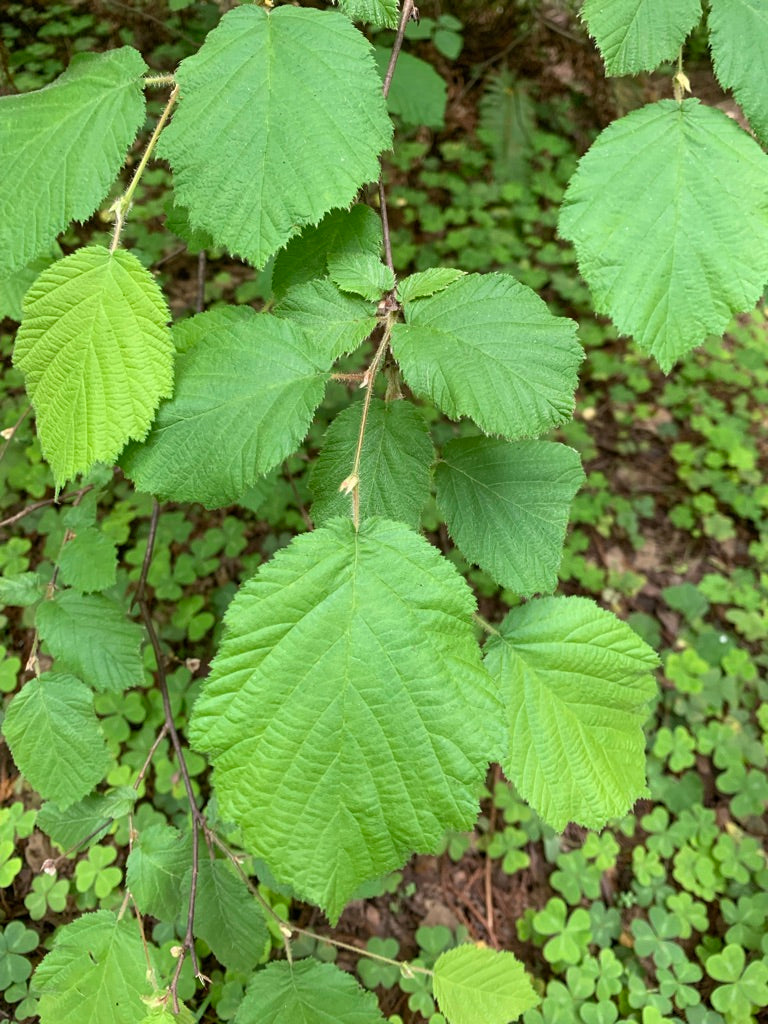Corylus cornuta var. Californica, California Hazel-Nut
Corylus cornuta var. Californica, California Hazel-Nut
Couldn't load pickup availability
Corylus cornuta var. Californica, California Hazel-Nut
(packet of 8 Hazel-Nut seeds)
California’s answer to the filbert! This mild and tasty healthful nut was and is an important food source for wildlife and humans alike. Its taste is similar to the European filbert. Our taste testers declare it to be more intensely flavorful than the latter, and it stores better. It has a wide range from California to BC. The nuts ripen at slightly different times throughout this range.
The California Hazelnut shrub is drought-tolerant and deciduous, providing fall color when the leaves turn gold before dropping October-November. Graceful, adaptable, and vigorous, it can be coppiced every few (approximately five) years to keep it shapely and maintain the usefulness of its straight shoots, which are an important basketry material for basketry, rope, and other items.The California hazelnut plays a role in the current importance accorded to Indian burning in maintaining a healthy landscape. It is well-known for being systematically burned to maintain the straight, flexible shoots.
The shrubs grow from 5’ to 30’ tall and 4 to 8’ wide, putting them in that useful category of the large shrub/small tree. They can handle full sun to part-shade, thriving in a range of soils and conditions. The male catkins are showy in the fall, and a tiny red female flower can be viewed up close enough to see the bright red stigma and styles.
We start gathering the nuts in June and July. Gathering hazelnuts is a good vision exercise, as the ripening nuts are well-disguised by the leaves and hairy overcoats surrounding the shells. This enhances the thrill of the chase. We remove the shells and then toast the nuts lightly. Ethnobotanically speaking, this food has a multitude of uses for our First Nations, and was valued for both elders and infants. A hazelnut “milk” was made for the ill as well.
If the jays are particularly numerous, we do sometimes resort to collecting a bit early. Picking while still slightly unripe can work because the nuts do ripen while in storage. The scrub jays in our Demonstration Garden scold us when we gather the nuts, but that is because they don’t like sharing. They get more than their share, but since they are the main planters of our hazelnut orchard, we are grateful. They do a good job.












